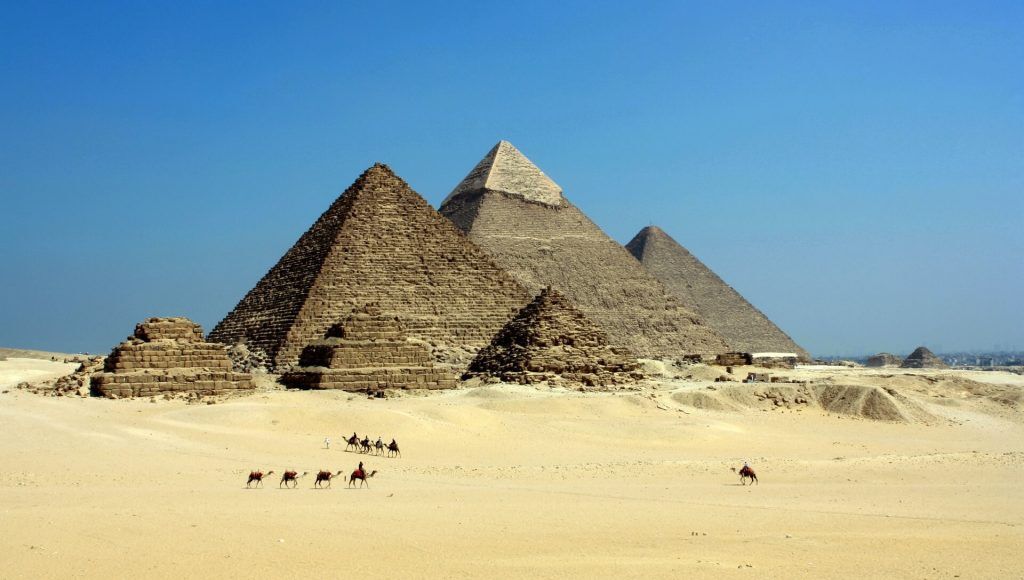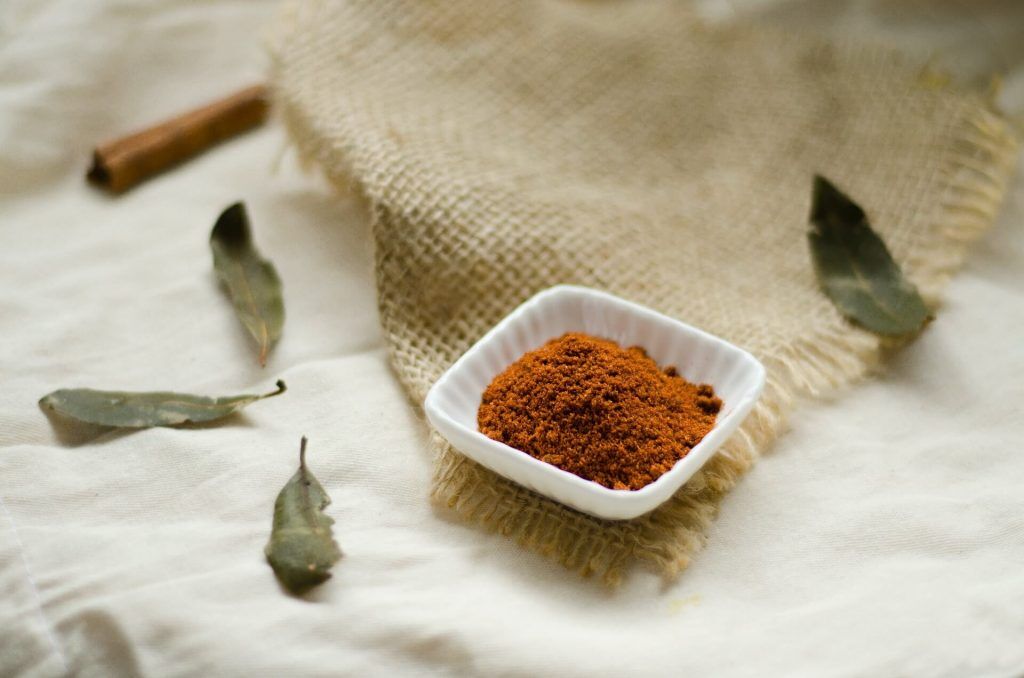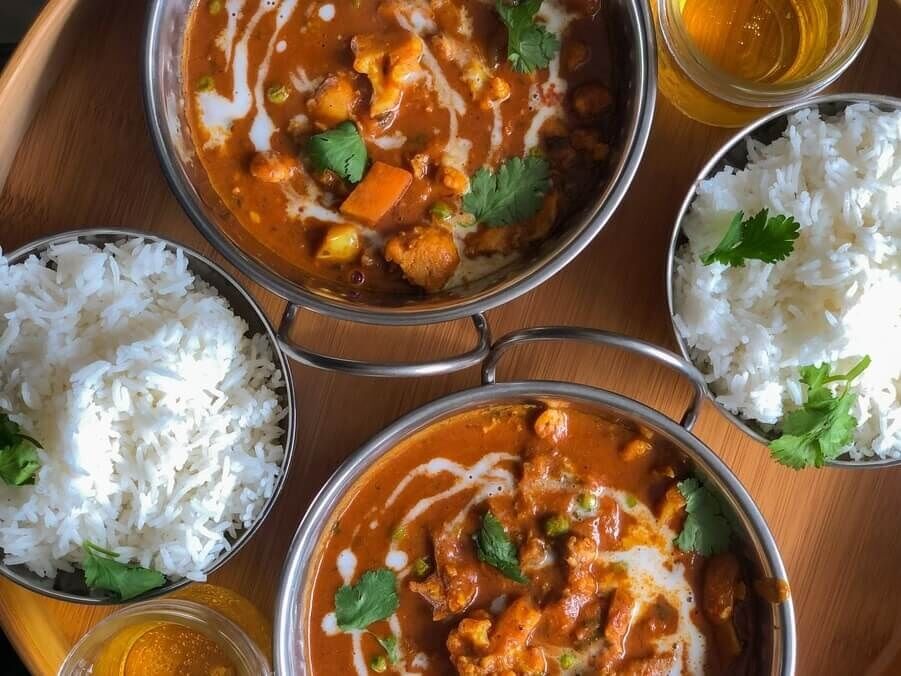Your cart is empty.
SUBTOTAL
£0.00

Whether it’s Adobo from Latin America, Baharat from the Middle East or Tikka Masala from the Indian subcontinent, we have all at some point had a taste of spice mixes. Indeed, even something as relatively simple as seasoned salt is a spice mix. But how did these vital ingredients and subsequent recipes become so common and important throughout global cuisine?

Historians and experts have been able to trace the use of spices as far back as 1555BC. Egyptians were keen to affiliate with spices – the Ebers papyrus noted coriander, fennel, juniper, cumin, garlic and thyme as health promoting. Meanwhile, there are records of those who built the Great Pyramid of Cheops eating onion and garlic, also believing they brought great health benefits.
Even further back, there are ancient myths in China. Around 2700BC, Shen Nung likely wrote “Pen Ts’ao Ching”. This translates to “The Classic Herbal” and mentions over 100 medicinal plants, including many spices. We know from studying the history books that these spices in the east then made their way west, via the Silk Road, ending up in places such as ancient Greece.
Here they played an important role in ancient Greek medical science. The famous Hippocrates wrote about spices and herbs including saffron, cinnamon, thyme, coriander, mint, and marjoram. Roughly 500 years later, the “Father of Botany” Theophrastus wrote two books summarizing the current knowledge relating to 600 herbs and spices.
Clearly, a vast array of individual spices were essential. But who started blending these spices and why?
This question doesn’t necessarily have a simple, straight forward answer. It is akin to asking the question, “why do we do anything”?
Why did early homo sapiens attempt to make fire? Why then experiment with cooking the deer they had just hunted over that fire? We are inquisitive beings by nature. It is by innate design that our ancestors first started to blend and mix spices.
This is the beauty of cooking – experimenting. Sometimes, you don’t get it right. But when it pays off, it’s an absolute delight. A beautiful reward for your tastebuds.
Like different people in different ports and cities along the Silk Road, spices all have different characteristics. As a lone spice it might be strong, perhaps even unpleasant. Whilst others such as cinnamon are not so bad.
In making spice mixes, we were seeking to create different tastes that can only be achieved by so doing. If the ancient Egyptians decided that individually they liked the taste of garlic, coriander and cumin, was it not inevitable that eventually, at some point, they would begin to mix these spices together?
And how about the Indians? Taking a closer look at the history and origins of Indian spice mixes can help to unlock knowledge and understanding of exactly how spice mixes have come to be.

Mixing spices is as much about art as it is science. The aim is to bring a range of different tastes and textures together, creating a balance that dances across the tastebuds. It’s just like cooking a meal. You’re looking to balance the sweet, salty, sour and bitter taste elements. Likewise, when combining spices you want to balance their different attributes.
It can be argued that the Indian subcontinent has perfected the spice mix perhaps better than anyone else on earth.
For both culinary and health purposes, spices such as coriander seed, turmeric, cinnamon, cumin, fenugreek, ginger, pepper, chilli, cloves, tamarind, cardamom and saffron have been used in India for thousands of years. As early as the 8th century BC, spices indigenous to India such as cardamom and turmeric were cultivated in the gardens of Babylon.
The Indians even had their own word for spice mixes. It’s one you’ll be familiar with.
‘Masala’ is a term originating from the Indian subcontinent, used in reference to spice mixes of certain proportions. Usually, it’ll be a combination of dried spices, perhaps dry-roasted, or a paste made from a variety of ingredients. There are now a vast array of masalas, all with different origins and uses. Below we’ve listed a variety of our favourites for you.
Used primarily in Indian, Bangladeshi and Pakistani cuisine, Chaat Masala consists of amchoor (dried mango powder), cumin, coriander, dried ginger, salt (often kala namak), black pepper, asafoetida (hing) and chili powder.
It’s used to flavour Chaat – a popular savoury snack throughout India that you can typically find served at roadside stalls and food carts. It originated in Uttar Pradesh – a northern state in India.
Garam Masala is popular throughout India but has also made its way to such places as Mauritius and South Africa.
Over the millenia, Indians have used spices and herbs in their Ayurvedic medicine and this is where the word ‘Garam’ originates. It refers to ‘heating the body’ which gives you a pretty accurate idea of what this particular spice mix does.
The combination of fennel, black and white peppercorns, cloves, cinnamon (or cassia), mace, cumin, coriander and black and green cardamom pods was believed to elevate body temperature. Perhaps useful when navigating the Himalaya?
There are many, many variants of this spice mix, including Goda Masala. This includes coconut and sesame seeds and is a regional variant from the western state of Maharashtra.

Indeed, quite a few varieties of masala have originated in Maharashtra which distinguishes Maharashtrian food from other aromas and flavours of India. Stronger and spicier flavours are significant in this particular western region.
Kaala Masala, for example, In the Marathi language where ‘Kaala’ means black refers to both the colour of the final masala and its ingredients. These ingredients are typically cumin seeds, coriander seeds, clove, cinnamon sticks, kalpasi, coconut, sesame seeds and chillies.
If you’re particularly interested in Maharashtrian cuisine, you may be tempted to visit the annual event in the city of Pune – ‘BhimThadi Jatra’. Meaning ‘fair’ or ‘bazaar’, this event plays host to hundreds of stalls selling different masalas. It’s a foodie paradise.
Another Maharashtrian flag-bearer, Kandna (onion) Lasun (garlic) masala originated in Kolhapur. It’s had a great influence on the local cuisine being used widely in the preparation of spicy vegetables that contribute to stuffed brinjal, shev-bhaji, misal, chicken, mutton, fish and egg curry.
It can also be used as a dry masala with snacks such as Usal, Missal, Vada Pav, Thalipeeth, Pakoda.
One of the most well-loved masalas, you will find this spice mix across all regions of India. Specific spices used will vary depending on which region you find yourself, but in general you will find it’s a mix of garam masala (see above!), garlic, ginger, onion, and cayenne pepper.
This specific mix of spices is for cooking traditional Indian cuisine with a tandoor – most famously, Tandoori Chicken. The tandoor (also known as a tannour) is a cylindrical clay or metal oven. Traditionally the heat for a tandoor was generated by a charcoal or wood fire burning within the tandoor itself. This exposed the food to live fire, radiant heat cooking and hot-air convection cooking. The food would then smoke in the fat and food juices that drip on to the charcoal. Taste buds watering yet?
Another masala heavyweight that’s known throughout the world, Tikka Masala is a blend of coriander, cumin, garlic, paprika, cardamom, pepper, cinnamon, clove, nutmeg, ginger, mint and chilli.
It’s most commonly used in a favourite dish – Chicken Tikka Masala. No matter which Indian restaurant you visit around the world, the chances are it will have this one on the menu. Although India has no national dish, this is perhaps a frontrunner.
Interestingly though, the origins of this dish are uncertain and hotly debated. Whilst many claim that it was indeed created on the Indian subcontinent, others will insist that actually it was created by the South East Asian community in Britain.
Food critic Rahul Verma claims he first tasted the dish in 1971 and that it must have originated in Punjab, India. However, some cookery books credit it to an invention of Bangladeshi migrant chefs who were migrating from what was then East Pakistan (now Bangladesh).
These migrant chefs developed and served a number of new inauthentic ‘Indian’ dishes – a theory that is backed up further by the similar story of British Pakistani chef, Ali Ahmed Aslam. It’s claimed that he created the dish in his Glaswegian restaurant, improvising a sauce made from yogurt, cream, and spices.
Whilst we may never know the true origin of this famous dish, we can be certain that it will be around for hundreds of years to come.
Similarly, Vadouvan is another spice mix that has been influenced by India – this one a French derivative. Blends vary but as a minimum, you can expect to find pounded onion, garlic, cumin seeds, mustard seeds and fenugreek.
It is thought that this mix is a natural product of French colonial influence in the Puducherry region of southern India.

It’s not just masalas that have spread around the globe and taken on all kinds of international variations. Let’s look at madras curry sauce.
Originating in the south of India, this sauce gets its name from the city known as Madras (now Chennai) where English merchants first arrived in 1640. It’s a fairly hot curry sauce that uses a lot of chilli powder, giving it that classic red colour.
The name madras however, is not used in India. This was something invented by British restauranteurs. The variation was again something cooked up by British Bangladeshi chefs throughout the 1970s. A creative bunch!
In conclusion then, by studying a handful of the various masalas of India, you can begin to understand the importance of spice mixes and how they came to be.
Spice mixes are a product of human intuitiveness and wonder. We experiment with our cooking because we want to find new tastes. They are also a product of their medicinal benefits. If one spice was known to improve the health of your skin and another give you fresh breath, why would you not mix the two and gain both health benefits?
Furthermore, spice mixes have helped to form cultural identities carrying the reputations of different countries and regions far beyond their homelands. Who knows where the next twist and turn in the spice mix story might take us?
Understanding Spices
Spices have long been integral to the UK's culinary landscape, adding depth, flavours, and richness to a myriad of dishes. From the pungent aroma of cumin in Indian curries to...
Read MoreUnderstanding Spices
Confetti is an essential part of any wedding day. Not only is it a wonderful way to greet a newlywed couple, but it also provides some beautiful photo opportunities. The...
Read MoreSeasonal Ideas
It’s no secret that any handmade gift will always be more special than a store-bought one. Homemade food gifts are especially wonderful, a labour of love that shows someone you...
Read MoreHealth and Wellbeing
It’s no secret that winter’s cold and gloomy weather makes us crave indulgent dishes like fondue and baked goods like sticky toffee pudding and apple crumble. While Christmas is the...
Read More